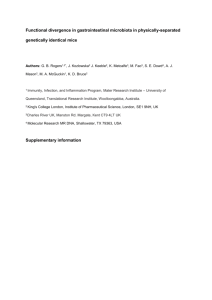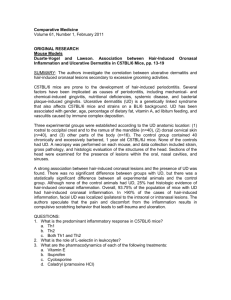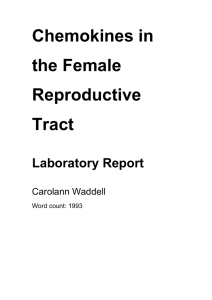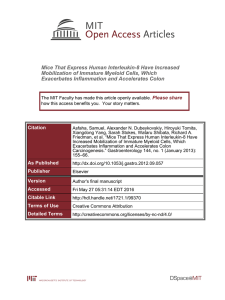Altering the Maternal Microbiome in cxcr2 ko Mice Decreases
advertisement
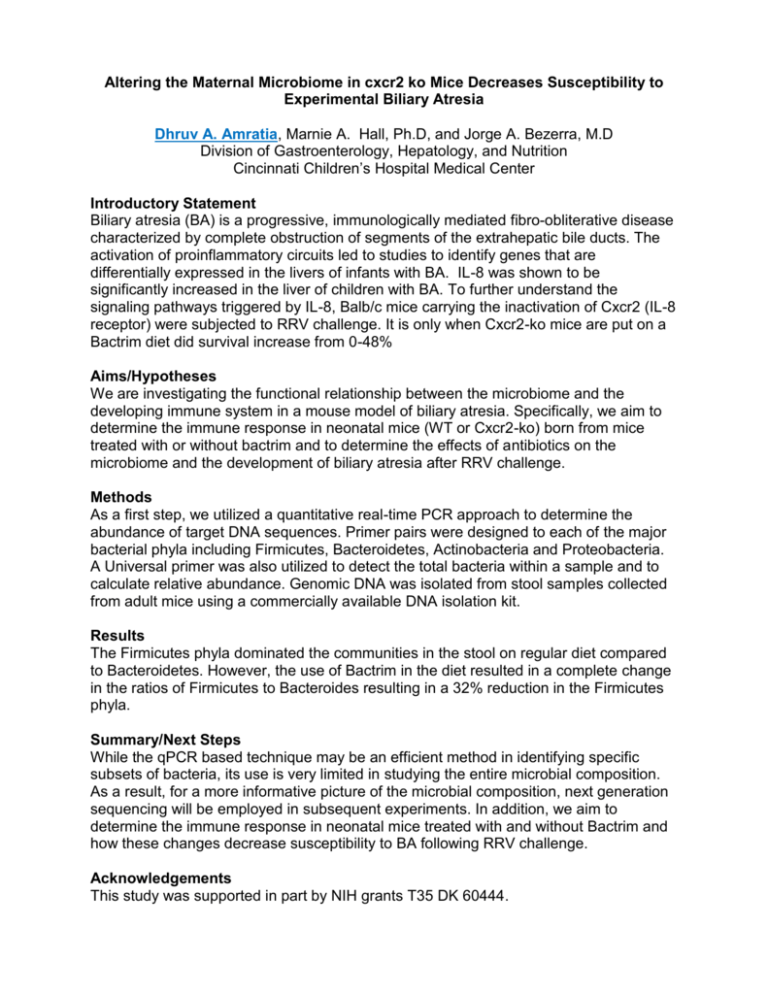
Altering the Maternal Microbiome in cxcr2 ko Mice Decreases Susceptibility to Experimental Biliary Atresia Dhruv A. Amratia, Marnie A. Hall, Ph.D, and Jorge A. Bezerra, M.D Division of Gastroenterology, Hepatology, and Nutrition Cincinnati Children’s Hospital Medical Center Introductory Statement Biliary atresia (BA) is a progressive, immunologically mediated fibro-obliterative disease characterized by complete obstruction of segments of the extrahepatic bile ducts. The activation of proinflammatory circuits led to studies to identify genes that are differentially expressed in the livers of infants with BA. IL-8 was shown to be significantly increased in the liver of children with BA. To further understand the signaling pathways triggered by IL-8, Balb/c mice carrying the inactivation of Cxcr2 (IL-8 receptor) were subjected to RRV challenge. It is only when Cxcr2-ko mice are put on a Bactrim diet did survival increase from 0-48% Aims/Hypotheses We are investigating the functional relationship between the microbiome and the developing immune system in a mouse model of biliary atresia. Specifically, we aim to determine the immune response in neonatal mice (WT or Cxcr2-ko) born from mice treated with or without bactrim and to determine the effects of antibiotics on the microbiome and the development of biliary atresia after RRV challenge. Methods As a first step, we utilized a quantitative real-time PCR approach to determine the abundance of target DNA sequences. Primer pairs were designed to each of the major bacterial phyla including Firmicutes, Bacteroidetes, Actinobacteria and Proteobacteria. A Universal primer was also utilized to detect the total bacteria within a sample and to calculate relative abundance. Genomic DNA was isolated from stool samples collected from adult mice using a commercially available DNA isolation kit. Results The Firmicutes phyla dominated the communities in the stool on regular diet compared to Bacteroidetes. However, the use of Bactrim in the diet resulted in a complete change in the ratios of Firmicutes to Bacteroides resulting in a 32% reduction in the Firmicutes phyla. Summary/Next Steps While the qPCR based technique may be an efficient method in identifying specific subsets of bacteria, its use is very limited in studying the entire microbial composition. As a result, for a more informative picture of the microbial composition, next generation sequencing will be employed in subsequent experiments. In addition, we aim to determine the immune response in neonatal mice treated with and without Bactrim and how these changes decrease susceptibility to BA following RRV challenge. Acknowledgements This study was supported in part by NIH grants T35 DK 60444.


![Historical_politcal_background_(intro)[1]](http://s2.studylib.net/store/data/005222460_1-479b8dcb7799e13bea2e28f4fa4bf82a-300x300.png)




